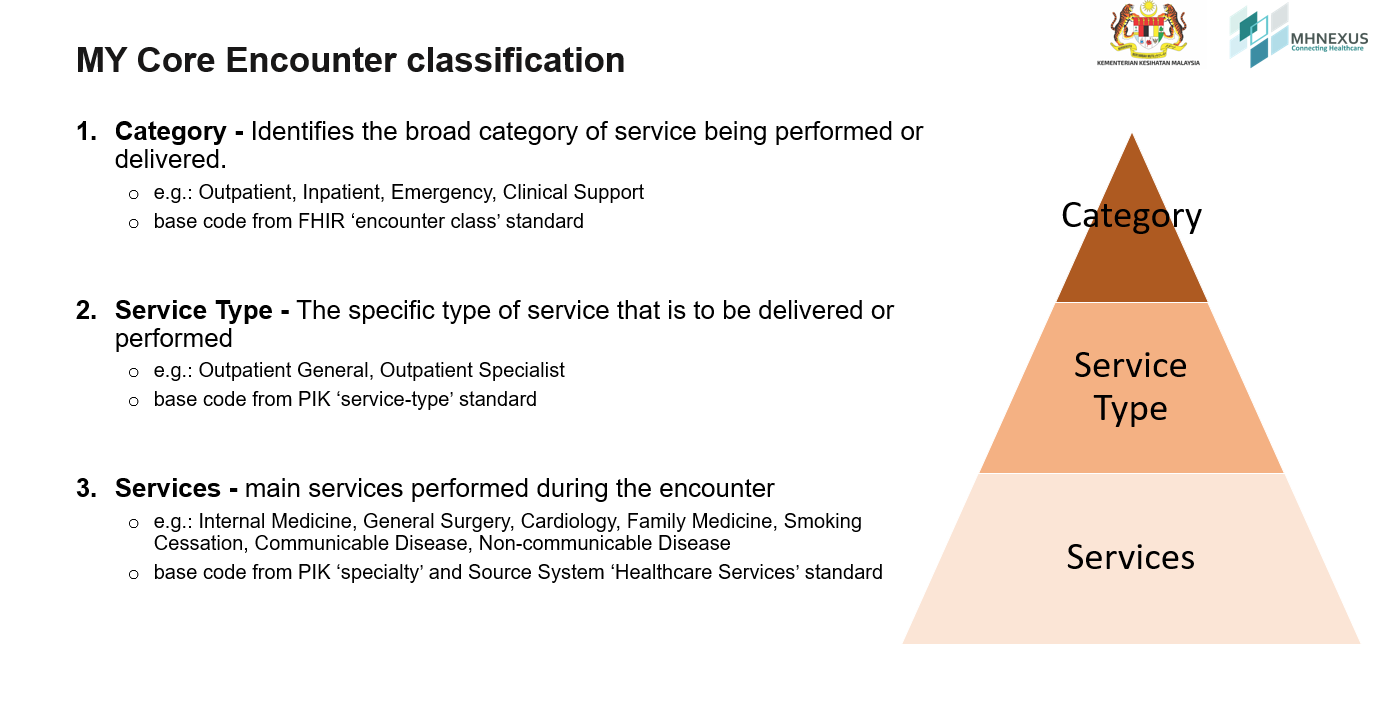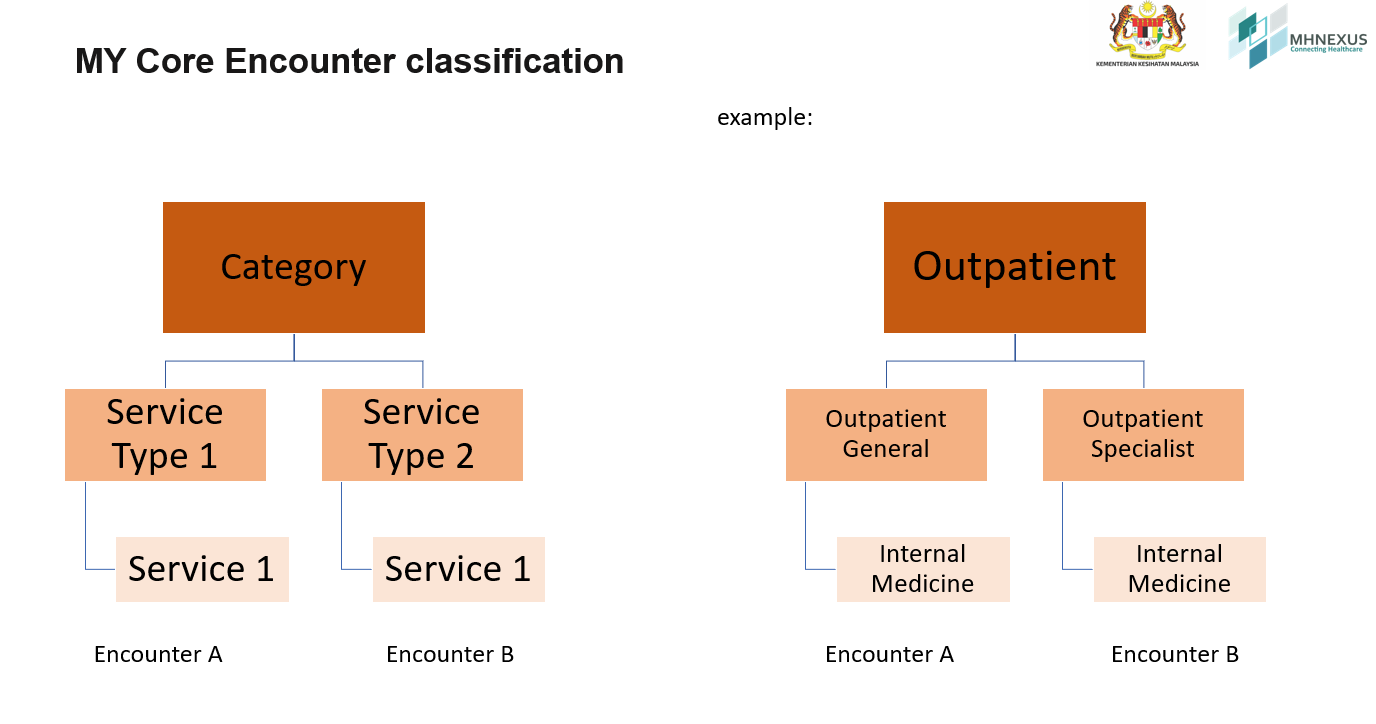HL7® FHIR® Malaysia Core (MY Core) Implementation Guide - Local Development build (v2.0.1) built by the FHIR (HL7® FHIR® Standard) Build Tools. See the Directory of published versions
The interaction between a patient and healthcare provider(s) for the purpose of providing healthcare service(s) or assessing the health status of a patient is stored as an Encounter (MY Core) record.
The Encounter record defines the setting of the interaction but is mainly used as an index resource that will reference or be referenced by other records which store most of the other details.
Here are some common APIs used in HIE.
| Sample Description | Sample Body | API Method | API |
|---|---|---|---|
| Create/Update Encounter record | Outpatient Encounter | PUT | [base]/Encounter/@encounterId |
| Retrieve Encounter record by ID | - | GET | [base]/Encounter/@encounterId |
| Retrieve Encounter record by identifier | - | GET | [base]/Encounter?identifier=@encounterIdentifier |
| Retrieve Encounter record with patient ID | - | GET | [base]/Encounter?subject=@patientId |
| Retrieve Encounter record with patient identifier | - | GET | [base]/Encounter?subject.identifier=@patientIdentifier |
- [base] = address url e.g. "https://fhir.hie.moh.gov.my/baseR4/"
- @encounterId = unique Encounter ID defined from source system e.g. "encounter-sample"
- @encounterIdentifier = Encounter registration number defined from source system e.g "HTJ-ENC-2211000036"
- @patientId = unique Patient ID defined from source system e.g "patient-sample"
- @patientIdentifier = Patient identifier such as MyKad number or MRN e.g "HIE-00000003"
The Encounter (MY Core) classifies an encounter in 3 levels:
Encounter.class, which defines the broadest concept of an encounter.
Encounter.serviceType, which defines the type of service that is delivered or performed.
Encounter.type, which defines the main services provided during the encounter.
Below are diagrams to demonstrate the classification of an encounter:


The diagnosis captured during an encounter will be referenced by the related Encounter Encounter.diagnosis.condition.reference. The diagnosis itself is stored as a Condition (MY Core) record. However, the role of the diagnosis (example: main diagnosis, discharge diagnosis, admission diagnosis) is stored in Encounter.diagnosis.use.coding.code.
Related Diagnosis Role ValueSet: ValueSetDiagnosisRole (My Core)
IG © 2022+ MHNexus Sdn Bhd. Package hl7.fhir.MyCore#2.0.1 based on FHIR 4.0.1. Generated 2025-08-27
Links: Table of Contents |
QA Report
| Version History |
 |
Propose a change
|
Propose a change
